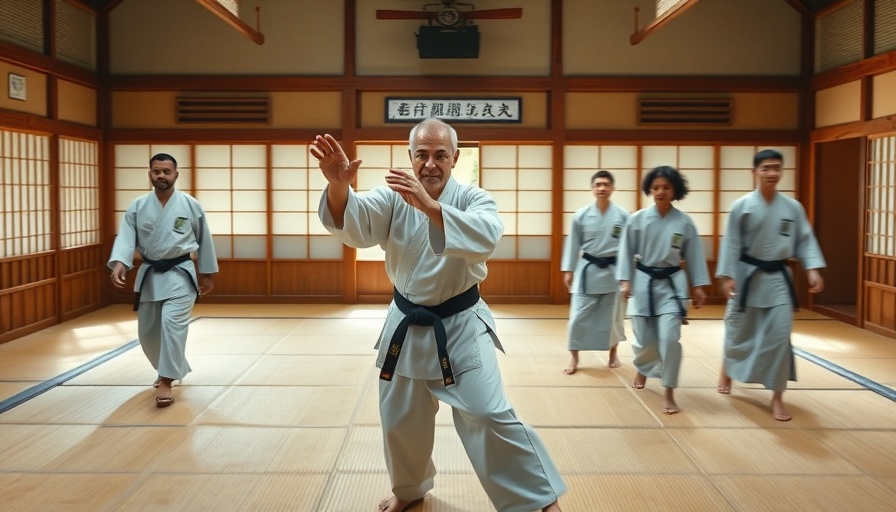
The Dojo Leadership Method: Harnessing Warrior-Grade Resilience for Modern CEOs
In the unpredictable world of business, CEOs often find themselves under immense pressure, constantly making high-stakes decisions. Just as a martial artist prepares for each bout with focus and discipline, so too must leaders in the corporate arena develop resilience and sharpen their focus to navigate the complexities of their roles. This brings us to the Dojo Leadership Method, a framework that draws parallels from martial arts to cultivate a mindset of continuous improvement and strategy adaptability.
Learning from the Art of Karate
The Japanese term kaizen, which translates to "continuous improvement," serves as a fundamental principle not only in karate but also in business leadership. For many CEOs, integrating this principle into their approach means evolving through various phases of their career with the goal of becoming a better leader at every turn. Just as karate practitioners strive to refine their skills, so must CEOs work to enhance their decision-making capabilities and resilience in the face of adversity.
The Importance of Focus in Leadership
In karate, maintaining concentration amidst chaos is pivotal. A slight distraction might provide an opening for an opponent to seize the advantage. Similarly, CEOs must learn to prioritize their focus, especially when market fluctuations and shifting customer expectations abound. Creating a daily routine that includes prioritization sessions can help leaders stay aligned with their top goals, fostering a culture of accountability and continuous progress.
Resilience: Adapting to Unforeseen Challenges
Adaptability is key in both karate and business. Just as a fighter must quickly adjust their strategy following an unexpected hit, leaders often need to recalibrate their business strategies based on market shifts and new information. The recent fluctuations in the AI and tech sectors serve as a reminder that agility in leadership is not just advantageous; it is essential for survival and success.
Preparing for Potential Setbacks
Every CEO will face setbacks. Finding ways to anticipate challenges and accepting failure as a learning opportunity can dramatically alter a leader's trajectory. Embracing failure, rather than shying away from it, allows leaders to experiment and innovate, ultimately strengthening their organizations. Engaging in frank discussions about potential pitfalls can help build a culture of resilience.
Strategic Moves for Maximum Impact
In martial arts, every action counts—the same holds true in the business world. CEOs shouldn’t engage in actions simply for the sake of being busy. Instead, they must focus on doing a few things exceptionally well. Prioritizing impactful strategies leads to greater success without the burnout that often comes from juggling too many mediocre initiatives.
Moving Forward: Avoiding a Rumination Trap
Post-action ruminations can slow down progress. Just as martial artists know when to let go of a failed move and re-engage, CEOs too must commit to their strategies, executing them without getting bogged down by second-guessing. This forward momentum is essential for navigating the fast-paced business landscape, where indecision can lead to missed opportunities.
Embracing Pressure as a Catalyst for Growth
The pressure in today’s corporate landscape is unrelenting. However, like a martial artist who transforms challenges into resilience, effective leaders harness their pressures to bolster focus and resolve. Success in both the dojo and the boardroom is attributed to those who withstand adversity and continue pressing forward, even when the situation gets tough.
For HR leaders, CIOs, and business managers striving to enhance resilience within their teams, integrating agile leadership principles inspired by the dojo can transform organizational culture and performance. Coaching and ongoing development in resilience strategies provide leaders with necessary tools for navigating complexity. So, adopt these lessons from the dojo today, and watch your leadership skills flourish in the face of adversity.
As we embrace a world characterized by rapid change, consider nurturing the agile leadership spotlight. Organizations that prioritize this adaptable mindset will not only thrive but also foster a culture of resilience that empowers their teams and secures sustainable success. To discover how to implement these techniques and elevate your leadership strategy, engage with coaching experts and resources tailored for executive growth.
 Add Row
Add Row  Add
Add 




Write A Comment